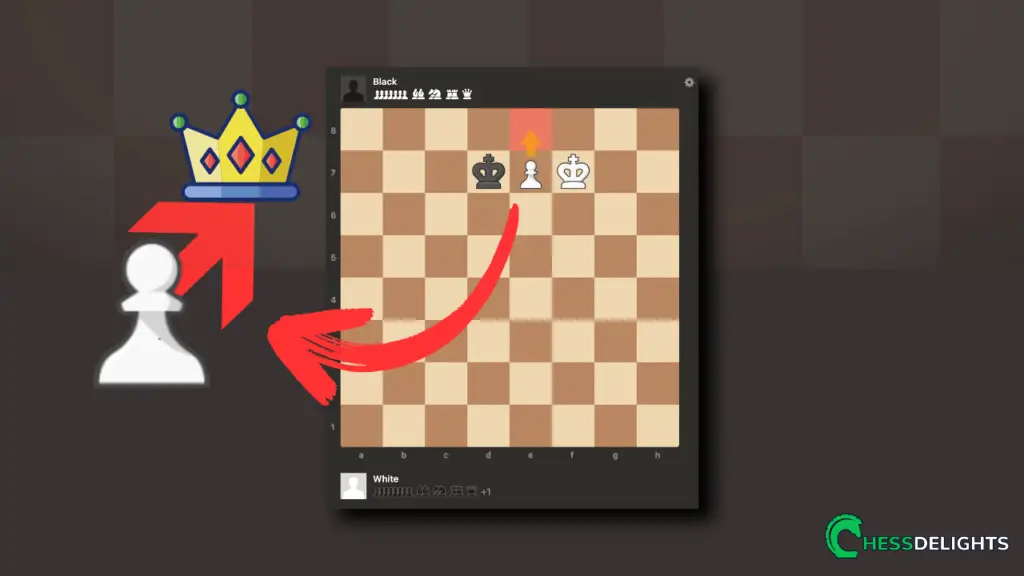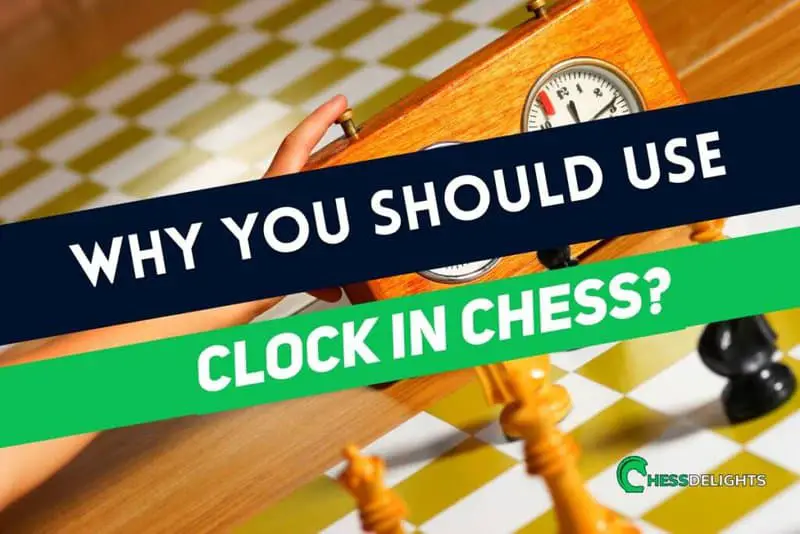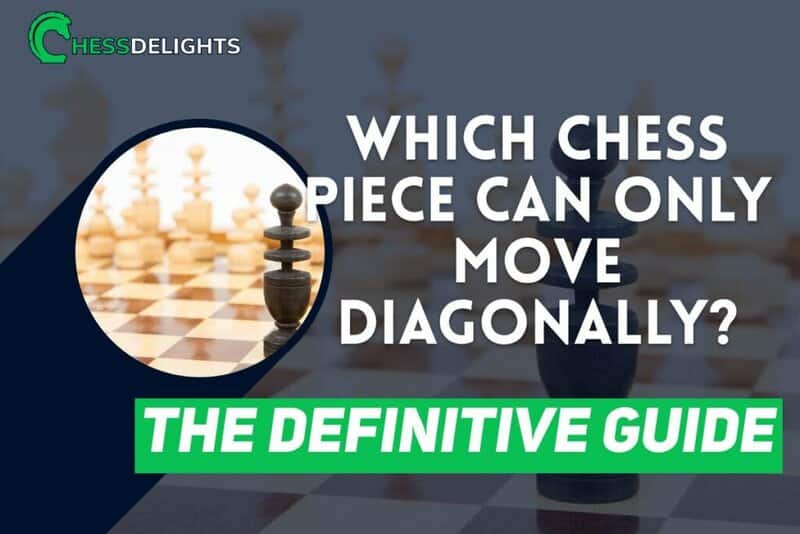Have you ever wondered about the chess rule of who gets to move first in chess?
As we all know, chess is a strategy board game played by two people on a board divided into sixty-four squares with alternating light and dark colors.
There are sixteen pieces to each side with eight Pawns, two towers (or Rooks), two Knights (or Horses), two Bishops, one Queen, and one King piece.
The Rooks are placed on both ends followed by the Knights, Bishops and the Queen and King pieces.
The eight pawn pieces are placed in front of each major piece.
The purpose of the game is to capture the opponent’s king through checkmating it wherein it wouldn’t be able to move another square without getting captured by other pieces on the board.
Alternatively, the game can be drawn when the opponent cannot make a legal move, and he is not in check, which is called a stalemate.
Furthermore, if one side voluntarily surrenders (or resigns) due to weak positioning, he loses the game. In chess tournaments, each win has scored a point while each draw is scored at 0.5 points.
Since we touch a little bit about basic chess rules, in this article I am going to mainly share some important points or rules about who goes first in chess…
Important Rules Of Who Makes The First Move (Explained)
What rule says about who goes first in chess?
Based on popular convention, in the game of classic chess, White always goes first.
This is to say that White would have an inherent advantage as he gets to make his mark on the board first.
Statistics kept by Fédération Internationale des Échecs or FIDE show that on official games since 1861, White does have an advantage as the player who controls it wins 52 to 56 percent of the time.
Several chess Grandmasters and theoreticians have long said that in a perfect game, chess would always get drawn or White should win the game.
Some of them have even theorized that as chess becomes more and more analyzed, that it would result in the game being led to a “drawn death” wherein the inherent excitement of plotting your strategy gets intercepted.
You may also like to read this article about tournament “chess clock rules“.
Other Grandmasters tried to debunk the well-established views that White has the inherent advantage.
In several published books, a lot of chess grandmasters (but more specifically, Andras Adorjan) have stated that the advantage lies in the psychology of getting the first move in rather than the actual position in reality.
Other Grandmasters have said that as the game progresses, at times, wrong moves and countermoves from White would lead to him losing his supposed advantage on the board.
The player controlling White can also lose control of the board should he miss a line of play that gives him a decided advantage based on his position.
Also read article about: Six Of The Best Chess Game Players Biggest Upsets
Since chess is a dynamic game, there are several permutations of each move that can happen and would result in varying positional advantages.
The psychological burden of White being the first to move and therefore is expected to win can also at times lead to the player to lose focus and try too much, which leads to him making wrong moves.
Additionally, there are symmetrical openings wherein Black copies what the White player moves and thus leads to situations wherein the perceived advantage is lost for psychological or objective reasons.
Based on more recent analyses, if beginners are playing the game, there doesn’t seem to be any foreseeable advantage of moving first.
However, if rated and ranked players play the game, the player moving the White pieces clearly gets a small advantage.
In a study commissioned by Adorjan, similarly ranked chess players based on the ELO ratings, showed that as the players' rating increases, the percentage of draws also increased. It also showed that the proportion of decisive games that White won increased, and White's overall winning rate increased.
Does White player really have an advantage?
In a 1735 book entitled the Noble Game of Chess, Captain Joseph Bertin stated hat since White plays first, it is understood that he has the attack position.
He meant that White had the initiative and therefore had the burden of initiating any attack that the opponent would counter.
It also said that any minor mistake that the player controlling White makes would neutralize his first move advantage.
However, any error committed by the player controlling Black to counteract the White attack leads to more dire consequences.
While it is a generally accepted notion among chess theorists and players that given the first move advantage, and given that both sides would play a perfect game, the most realistic situation is that a chess game would end in a draw, however, since chess is as aforementioned, dynamic, it cannot be efficiently proven.
You may also like to read and learn more about “difference of stalemate and draw“
Modern Ideas and Perspectives
Chess experts in recent decades have continued to debate whether White still has an advantage.
Some theorists state that they reject the idea that White has a positional advantage from the get-go and that Black would have to work harder to neutralize the perceived advantage.
GM Lawrence Charles Kaufman has stated that if the player would begin with e4 or d4, that he would be able to develop some sort of advantage that he can use until the endgame.
GM Adorjan however, still has an opposing view which stated that Black still is better as he gets to counter the moves and turn them into his advantage based on his aggressiveness on the board.
The concept of dynamism in chess persists and is gaining momentum.
You may also like to read article: Useful Chess Terms And Chess Moves You Need To Know
The idea is based on the fact that the player controlling White has initial control over the pace and the board.
His other advantage is that when things go wrong, he will be at a position herein, he would be able to act appropriately on it.
He also has the decided psychological advantage over his opponent.
Black also has an advantage. Black can pounce on the fact that White has the alleged advantage and use it to lay traps and gain positional advantage on the board.
As long as Black retains his flexible positioning to exploit reactive possibilities, he would tend to get an excellent chance to turn any attack into his own.
Furthermore, Black gets an analytical advantage as chess player tends to react after White moves.
A good chess player can turn this into his advantage as he can force White to go through a line of moves wherein White would tip his hand first, and he can pounce on them to create his advantage.
Additionally, Black can increase his chances of winning by playing different openings.
Also read: 5 popular chess openings that you need to memorize (explained)
A novel opening can throw White off his tracks as he would undoubtedly react to what is on the board rather than what he has laid out in his mind.
Black can thereby turn the initiative to his advantage as he can see more moves based on the potential and thus react accordingly.
As we have previously stated, the goal of a player handling the Black pieces is to remain flexible and elastic to be able to respond correctly to whatever unfolds.
Bonus: Best Chess Openings for White
There have been so many books postulating the positives of opening with either the e4 or the d4 as it helps you to seize control of the center of the board immediately.
It also helps to develop the position of your Queen and bishop pieces faster as they get their lanes opened up for sniping pieces off your opponents.
Playing e4 and d4 is advantageous as it gets you a better scenario to develop other pieces to keep your game dynamic.
If you do not use these moves, Black can gain the upper hand as he can move to get the center position away from you.
You would then lose your advantage as you begin to react to what Black does instead of the other way around.
Your piece development would also take a hit as you would lag and be subjected to responding to whatever moves Black makes.
Moving the d4 gives you the option to use the Queen’s Gambit, King’s Indian Defense, Nimzo-Indian, Bogo-Indian, Queen’s Indian Defense, and Dutch Defenses.
These openings are dynamic and give the player a different perspective which he can play to his strengths in the middle and endgame.
Other less common deviations include the Caro-Kann Defense, the Englund Gambit and the English Defence.
On the other hand, if you choose to move e4 first, you have the option to pursue the Ruy Lopez, the Giuoco Piano, the King’s Gambit, the Sicilian Defense, the French Defense, and the Center Counter.
You may also be interested in reading “can you capture the King in chess“
These opening moves give you the territorial advantage, so to speak and get you to develop your particular area of attack faster.
Whether you choose to move d4 or e4 first, you would be able to play into the strength of the White first-move advantage.
As we have stated, it is quite essential to gain territorial advantage using the center. Strengthening the position is up to you.
Remember, whether you subscribe to the thought that White has an advantage or not, you have to be able to turn the position you are in into a position wherein you can gain the upper hand and dictate the pace of the game.
Once you can dictate the game, you would be able to win more times than not.
Wrapping Up
There you have it…
I hope you were able to learn more about the importance of gaining a positional advantage in the game.
Don't get bogged down about thinking that White has all the advantages since White players get to move first according to our chess rule.
It's up to you to turn things around and become the chess player that can take any position into a winning game.
If you find this helpful, please do share this with your friends and family who are playing chess too…
Have fun learning chess! 🙂
Click here to check out ChessDelights Chess Resources







